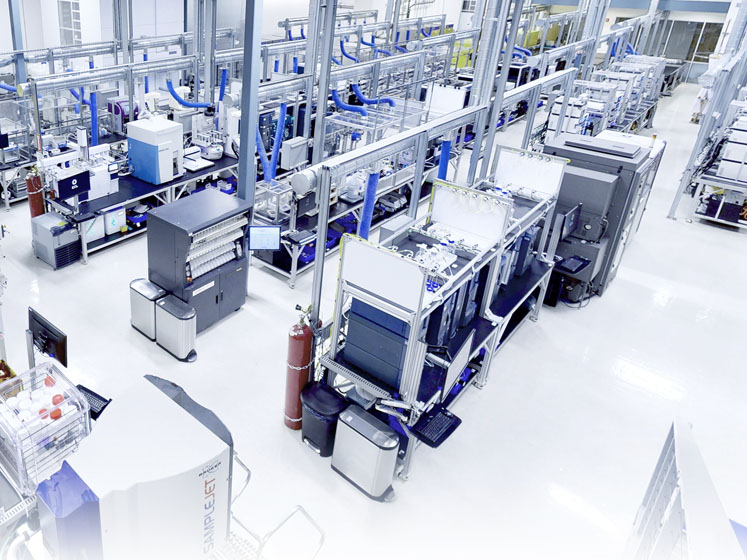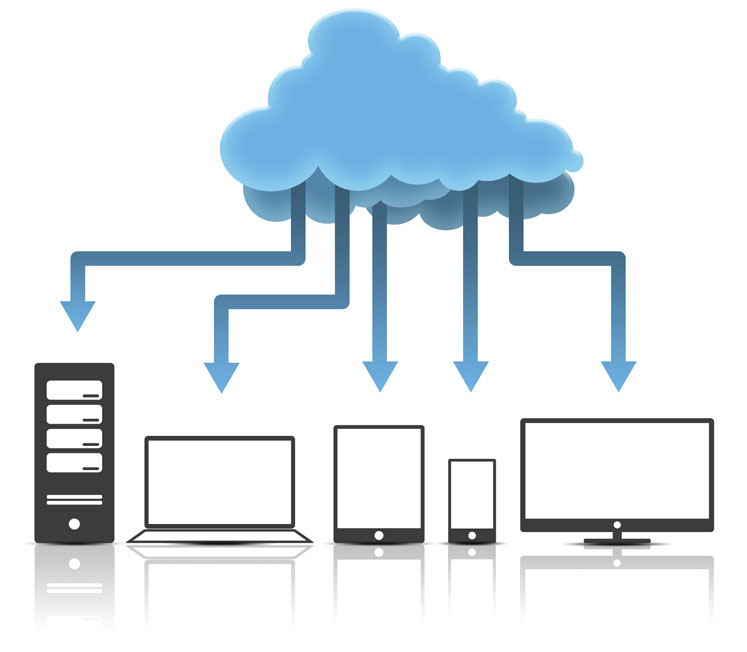Ask any laboratory manager at a pharmaceutical company about the biggest challenges they face in research and development (R&D) and process development … and they will likely say it’s the little things.
A recent survey by Agilent found that lab managers overwhelmingly desire a better infrastructure that helps them with the day-to-day running of the lab; namely, more sophisticated lab instruments, better documentation of sample chain-of-custody and better-trained staff.1
The most common challenge cited by survey respondents was the need to perform maintenance on their instruments and the downtime this created. Half of the respondents also cited challenges in data management. Overall, this survey demonstrates that beyond the broader challenges of bringing safe and effective drugs to market, most laboratory managers simply want a lab that runs with less friction.
One way to resolve these challenges is to take day-to-day lab management and the execution of experiments out of the hands of scientists by employing the services of a cloud laboratory.

A cloud lab is a fully automated laboratory in which experiments run remotely, exactly as designed by the scientist but without requiring their attention. With a subscription that often costs less than a single laboratory instrument, scientists can ship in samples, design and submit complex protocols, and run multiple experiments simultaneously and automatically, all without having to set foot in the lab.
With a cloud lab, pharmaceutical companies do not have to purchase and maintain equipment, set up and break down instruments or hire highly skilled technicians. Here are a few of the many benefits that cloud labs provide to both start-ups and established pharmaceutical companies alike, including reduced overheads, greater productivity and guaranteed reproducibility.
Reducing capital expenditures
Both new and established pharmaceutical companies face immense capital expenditures. For a new pharmaceutical company, among the most expensive and time-consuming investments they must make is simply building and running a research facility.
Scientists may spend days or weeks finding, purchasing and setting up a single piece of equipment, and then even more time ordering consumables and maintaining the instrument — time that could be better spent designing experiments and interpreting data.
Between the cost of purchasing, running and maintaining equipment — and hiring laboratory personnel — costs can easily reach tens of millions of dollars.
Even established pharmaceutical companies can benefit from reduced capital costs. According to McKinsey, large pharmaceutical companies often overlook the hundreds of smaller projects they’re funding, which, in mature sectors of the industry, account for up to 70% of their total capital expenditure.
McKinsey found that if a typical large pharmaceutical company reduced spending on half of its projects by 20%, they could save $200 million a year and instead invest this money in R&D or acquisitions.2
With that being said, automation, outsourcing and cloud services have reduced the cost of running a (big or small) pharmaceutical company. Contract research organisations (CROs) will perform outsourced scientific work, often for less than it costs to run experiments in-house.
Other companies will help start-ups to rent lab space and equipment, automate portions of an experimental workflow or streamline legal and regulatory processes. But none of these approaches offers the comprehensive power, flexibility and rapid scalability of a cloud lab.
Cloud labs are, essentially, R&D facilities for hire. Unlike CROs, cloud labs leave the experimental design in the hands of the client’s own experts and enable researchers to run them faithfully without physical involvement.

In a cloud lab, scientists can control every parameter of any experiment, from chemistry to cell culture. By programming their experiment using the Internet, as if they were setting up an instrument on their own lab bench, scientists can reduce the opportunity for protocol errors and operator bias.
This not only helps companies of all sizes to save money, it also helps start-ups to more efficiently advance their molecules to later stages of development, when venture capitalists are more likely to fund their pipeline.
Increasing the speed of drug development
Only 14% of drug candidates reach the clinic.3 And although estimates vary, one recent analysis suggests that the cost of developing a drug is more than $1 billion.4
To address these ballooning numbers, pharmaceutical companies have focused on getting better at picking candidates using improved business practices and artificial intelligence. In all, the industry aims to increase success rates while staying streamlined by keeping its headcounts and maintenance costs low.
Cloud labs offer a new solution to this problem, enabling scientists to spend more time on data interpretation and experimental design. As experiments can be run without the scientist’s intervention, many unique protocols can be run simultaneously, 24 hours a day, seven days a week.
This means pharmaceutical companies can operate with a lower headcount while conducting more experiments than ever and discovering promising drug candidates faster.
Making experiments repeatable
A 2015 analysis of preclinical research found that approximately $28 billion in scientific research per year cannot be reproduced.5 Since then, scientists throughout life science R&D have sought to identify the source of this crisis.
They’ve pinpointed multiple issues, such as unreliable instrumentation, underpowered datasets, insufficiently documented protocols and rampant data loss.
Several companies have tried to address these issues. Some have built more precise instruments to ensure data collection is more reliable whereas others have developed digital tools, such as electronic lab notebooks (ELNs) and laboratory information management systems (LIMS), to streamline data recording and storage.

Although solutions such as automated instruments or electronic lab notebooks might address a portion of a laboratory’s reproducibility gaps, running experiments directly in the cloud allows for an integrated approach that addresses systemic challenges that cannot be solved with piecemeal solutions.
For instance, cloud labs not only employ state-of-the-art automated technologies to maximise efficiency, they also fully script and document every action performed in the lab. As a result, the experimental variability resulting from inconsistent human operation automatically reduces. This is not so different from standalone automation solutions; however, cloud labs encompass the entire lifecycle of an experiment.
Additionally, just as process analytical technology supports quality assurance for pharmaceutical manufacturers, cloud labs incorporate a myriad of sensors that report environmental information back to the researcher to ensure that their experiments are running properly.
These sensors offer full sample trace history, instrumentation information (including calibrations and qualifications) and metadata. This integration allows for the rapid troubleshooting of inconsistent results.
For example, this system could prevent sample contamination by detecting the use of non-analytical grade reagents in the preparation of a buffer, even if it is not used on an automated liquid handler until several weeks later.
Finally, the process by which scientists submit, execute, store and transfer their experimental protocols in a cloud lab makes their experiments push-button repeatable.
To perform an experiment remotely, researchers completely define their protocol details via a software platform.
This alone guarantees the recording and storage of comprehensive protocols that leave no detail unresolved. Because the system is fully integrated, it can check for errors ahead of experimental execution and alert the scientist if there are any incomplete experimental details before the experiment even starts.
Because protocols require full definition to start running, they can be run repeatedly, thereby creating true replicants. Additionally, by combining these full protocol definitions with their integrated sensor platforms, cloud labs can verify that the protocol is being faithfully executed each time.
Paired with the increased efficiency that a cloud lab provides, researchers can run more experiments and increase the statistical power of their results.
The future of cloud labs
Cloud labs conduct all the typical work performed in pharmaceutical R&D and process development laboratories at a level of efficiency, precision and documentation that far exceeds legacy manual operations.
Aside from the pure economic payback, a cloud lab frees up the valuable time of scientists, allowing them to devote all their efforts to do what they excel at: designing new experiments and interpreting the results to drive research and new products forward. These efficiencies will allow scientists who make this evolutionary leap to bring forth a new wave of discovery and competitive advantage.
References
- www.businesswire.com/news/home/20190604005384/en/Agilent-Survey-of-Pharma-Lab-Leaders-Uncovers-Challenges-in-Workflow-and-Laboratory-Efficiencies.
- www.mckinsey.com/business-functions/operations/our-insights/the-hidden-value-of-improved-capital-expenditure-management-in-pharma.
- https://academic.oup.com/biostatistics/article/20/2/273/4817524?login=true.
- https://jamanetwork.com/journals/jama/article-abstract/2762311.
- www.nature.com/articles/nature.2015.17711.
